Pothos and philodendron are both common houseplants today and have a lot of similarities which can confuse owners into telling the difference
between the two. So, what are the differences between these two types of plants? We’re digging into the differences and similarities of pothos vs philodendron.
Indoor plants are one of the best additions to a home. From the benefits of cleaner air and more oxygen to being a natural stress reliever and mood booster, it’s no question why so many people love and own houseplants.
Pothos and philodendron plants are two popular houseplants! While they are two very different plants they have a very similar appearance to them. If you’ve ever wondered the difference between pothos vs philodendron, you’ve come to the right place! We’re going to share the main similarities and difference of these plants.
Table of Contents
Pothos
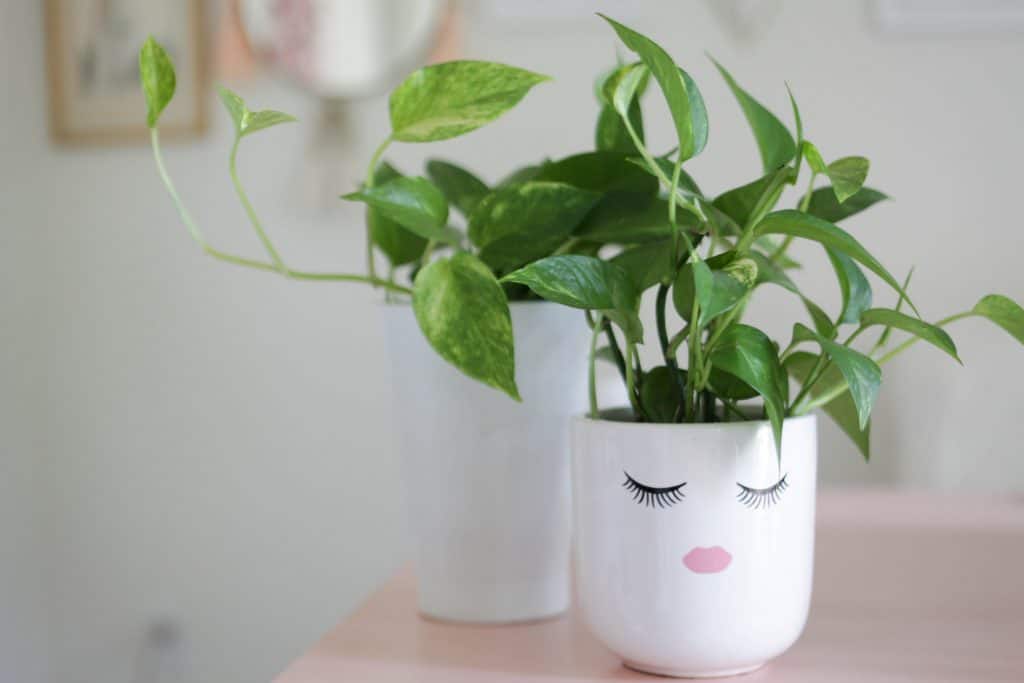
The Pothos plant (scientific name – Epipremnum aureum) is a super hardy plant that’s great for beginners. The common name for a pothos is devil’s ivy and is a member of the araceae family.
It’s a popular houseplant with tons of different varieties. It’s a vining indoor houseplant that includes heart-shaped leaves, long stems, and aerial roots for attachment, and could make a great design addition to your home.
It is usually grown indoors as a hanging or climbing plant, although its native habitat is the western Pacific island. This plant thrives under indirect sunlight. High-intensity direct sunlight can cause its leaves to droop – so be mindful of where you place this plant in your home.
Common Types of Pothos
There are some many different varieties of pothos. Some of the pothos varieties include golden pothos, jade pothos, marble queen pothos, silver pothos and satin pothos.
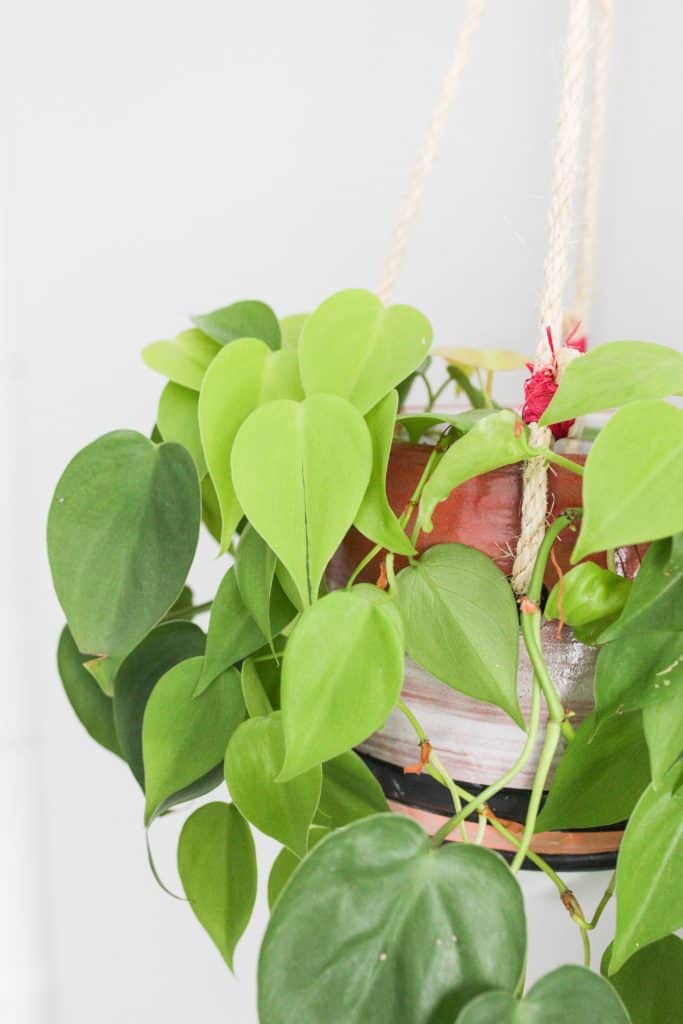
While they all have very similar characteristics to them, they all have some degree of differences to them.
For example, the neon pothos color is not the same green as say, a golden pothos. The neon pothos is much more vibrants and neon (as the name suggests) while the golden pothos is that similar lime color but with yellow tints to it.
When you look at a golden pothos vs heartleaf philodendron, you’ll notice that the size of the leaves of the pothos are much larger than that of the heartleaf philodendron. Goden pothos leaves can grow up to 30 inches long while the heartleaf philodendron only grows up to 12 inches long.
I have a full post sharing tons of different types of pothos plants as well as a 18 different philodendron varieties to help show the differences of some of the most popular species of both of these plants a bit more.
Philodendron
Philodendron (scientific name – Philodendron Selloum) is also a popular plant found in many homes today. This is also a vine plant, although it’s more of a tropical plant with its natural habitat is the tropical rainforest of the West Indies.
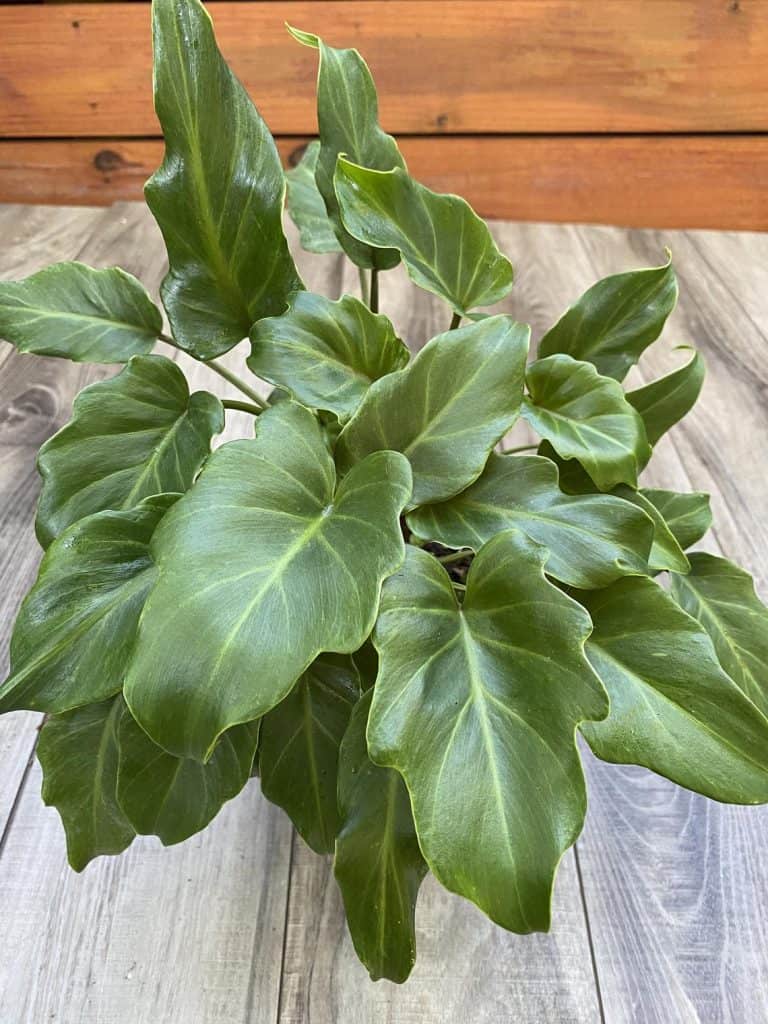
Image via Tropical Plants FL (You can also buy this one there too!)
Philodendron leaves are green, heart-shaped, and have smooth surfaces, and it produces flowers and aerial roots like the monstera plant. Its distinguishing feature would have to be its length – the philodendron plant can grow up to six feet long!
There are also many species of philodendron including the heartleaf philodendron and lacy tree philodendron.
The Differences Between Pothos vs Philodendron
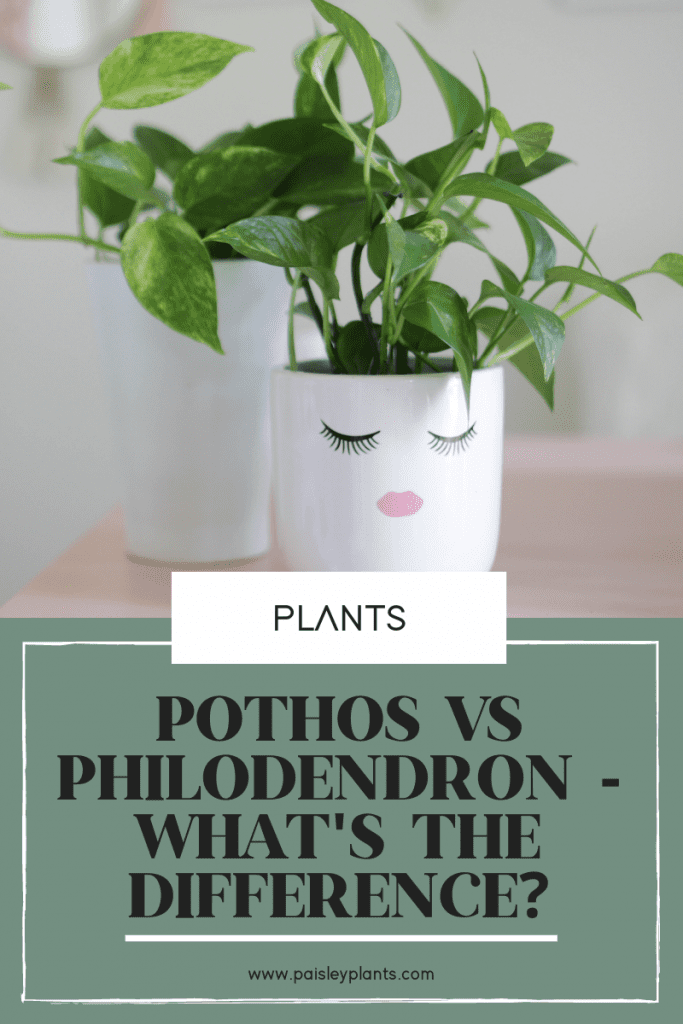
At first glance it can be so hard to see any differences between a pothos vs a philodendron, especially if you’re new to plants. But there are some distinguishing features!
Length of Plant
While these plants are similar, it’s always good to know the differences they sport. With the philodendron’s long length being mentioned above, it’s actually worth noting that golden pothos can grow up to ten feet long, making them much bigger and easily identifiable!
Leaf Shape and Color
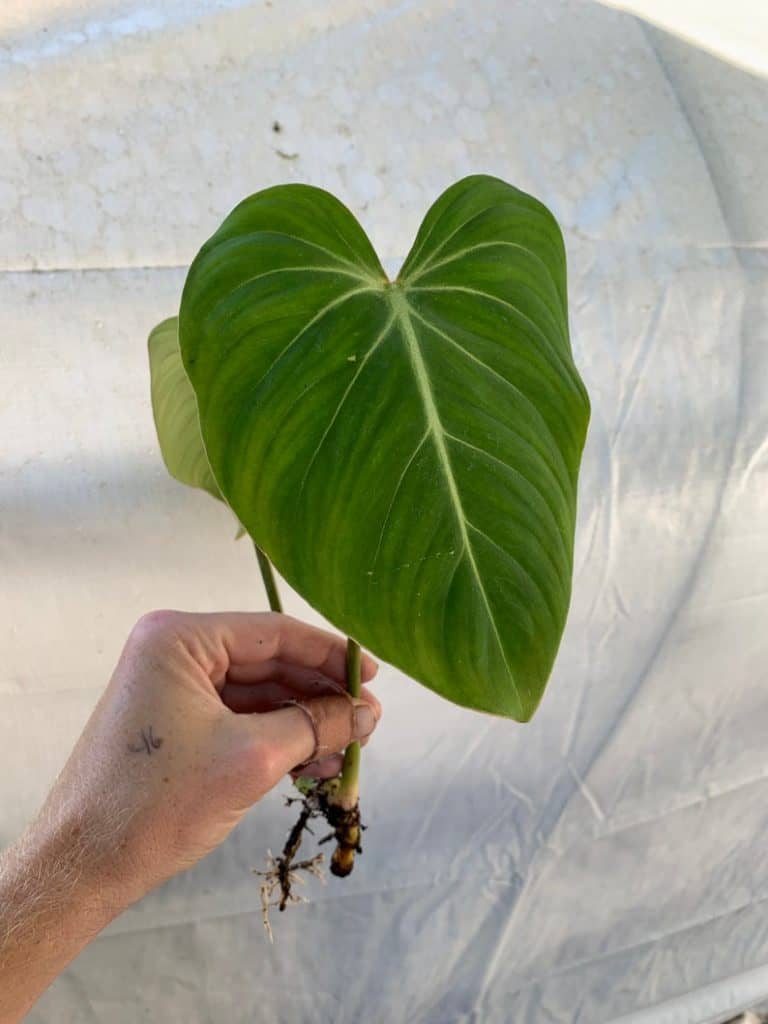
Image via Etsy – The Green Escape (where you can purchase)
Another feature is the leaf. While both plants have a similar leaf shape (heart-shaped), it can be bit different. The philodendron leaves are usually more rounded with a more defined heart shape to them. The pothos leaves typically have a less pointed tip and are less uniform.
The foliage color can sometimes determine what plant it is. Philodendrons have dark green leaves, while golden pothos can have yellow markings on their leaves. In addition, golden pothos leaves are usually 30 inches in length, while philodendron’s leaves only usually reach 12 inches in length.
Texture of Leaves
Talking of leaves, let’s consider leaf texture which is one of the key differences. between these two plants Pothos leaves have a bumpy texture with a waxy feel to them. They’re also thicker than the philodendron leaves.
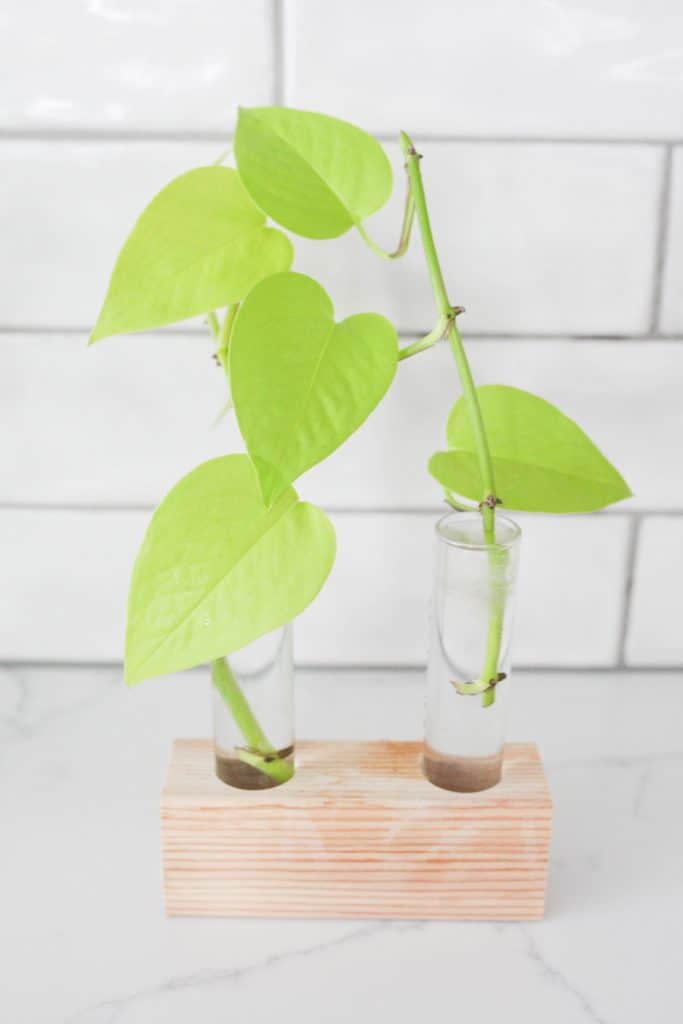
In contrast, philodendrons leaves have a smooth texture, making touch an identifiable factor in telling which plant is which. They are better at absorbing light because of their smooth matte texture.
Petiole Differences
The petiole is the stalk that connects the leaves to the stem. When thinking about the petioles, this is also a difference to be aware of. Golden pothos petioles are grooved, with the grooves running between the leaf and stem. On the other hand, philodendron petioles are typically round and smooth, a little slenderer than pothos petioles.
Aerial Roots
Finding the difference between the plants can be difficult, looking at their aerial roots may be the telling factor in distinguishing these common houseplants. Philodendron roots are long while pothos roots are much stubbier and wider.
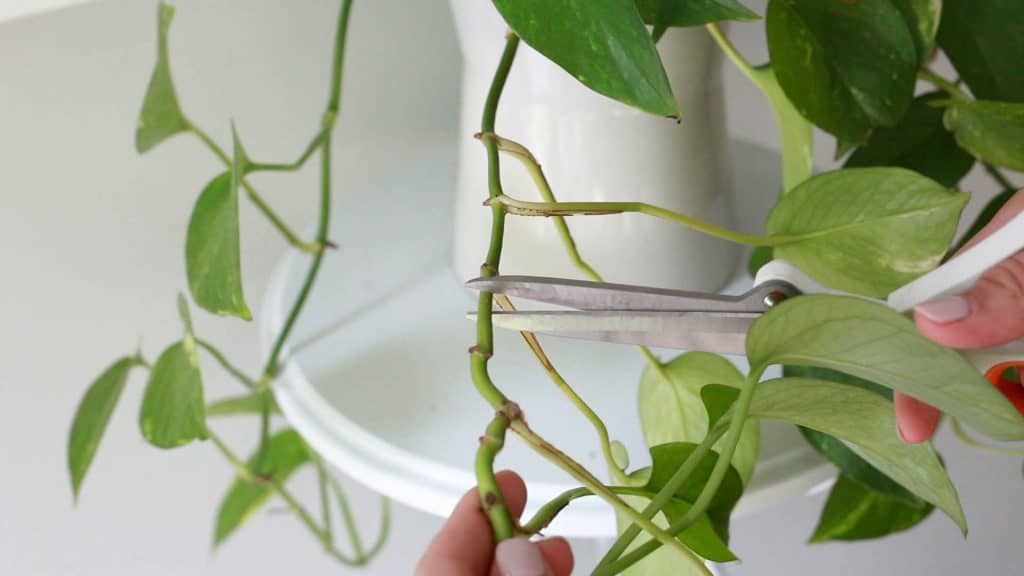
A final difference between the two types of plant is that the golden pothos plant can retain more water than the philodendron due to its thick leaves. This means that, under the same conditions, the pothos plant tends to grow faster. With this being said, both types of plant need thorough watering to flourish.
Just make sure that the soil is given the opportunity to dry out before watering again – this is especially true for pothos. You’ll want to make
sure that the top two inches of water have dried while the soil is still moist. Furthermore, a good tip in caring for your plants with water is to use
distilled or filtered water – non-filtered, hard water can sometimes contain chemicals that do plants harm.
Additionally, always bear in mind that overwatering can cause as much harm as underwatering!
Similarities Between Pothos vs Philodendron
Despite all these listed differences, the similarities between the plants should also be discussed – because there’s a lot more to it than just looking similar!
As mentioned above, both plants produce flowers and have heart-shaped leaves, making them quite hard to distinguish. However, it’s less common for golden pothos to grow flowers, and when it does, the flowers are usually purple or green. Philodendrons have green flowers all year round.
They also both thrive in tropical climates, meaning that moist soil is an essential condition for both types of plant. Furthermore, both species grow well in bright but indirect sunlight.
In very low lighting, the plants may lose their variegation, while intense light may cause the yellowing of leaves. If you’re wanting to put this plant outdoors instead of inside your home, pick a shaded spot to avoid direct sunlight.
Both plants develop aerial roots for climbing. Furthermore, both houseplants absorb nutrients from the air and can act as a living air purifier!
Caring for your plants
If you’re considering buying either one of these plants, knowing how to take care of them is vital to maintaining their growth and can make a great decorative addition to your home. Read on for the discussion of tips to help you keep your plants alive and thriving.
Pothos Care
Some of the most hardy plants around are pothos plants. In fact, my own mom gave me my first plant, a pothos, while I was in college! If a busy college student who has no plant knowledge can keep a plant alive, you better believe you can too.
Light Requirements
Pothos do best in indirect sunlight and can even do well in low light conditions. The won’t do well in direct sunlight so keep that in mind when you find a home for your new plant.
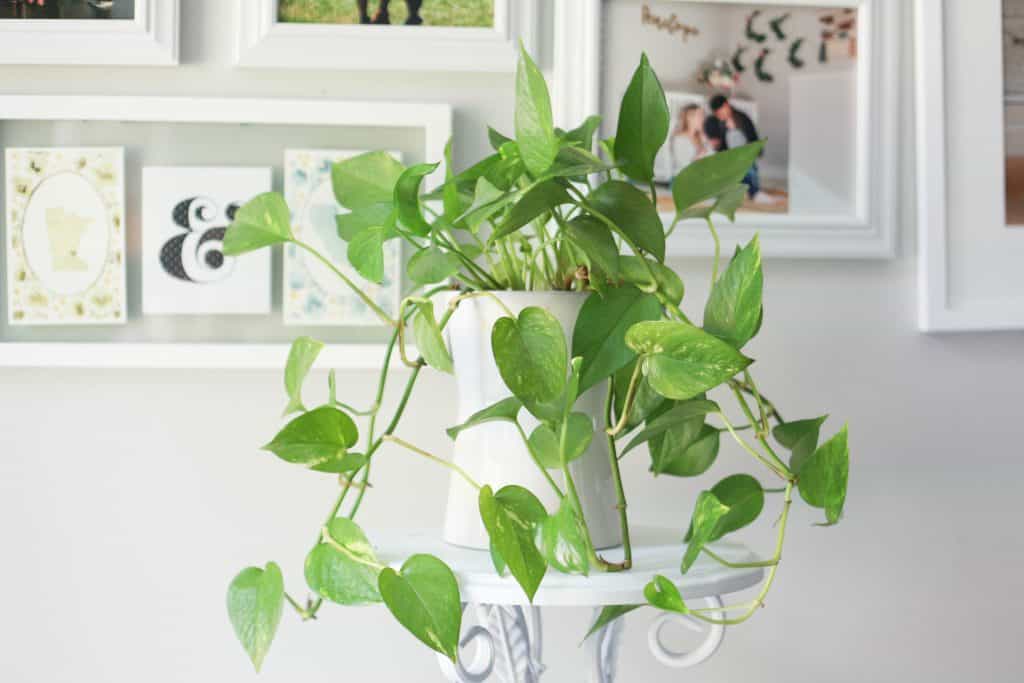
While it is doable to grow this plant outdoors, growing it indoors is recommended for this type of plant.
Water
Water your pothos about every week or so. Touching the top few inches of soil will help you know if you need to water it – if it’s dry, water them. If it’s still wet, leave it alone!
Make sure you give it a thorough watering but don’t overwater them. Overwatering your pothos can cause root rot and eventually die.
Other Pothos Tips
As mentioned above, pothos is a vining plant. When it comes to potting your pothos you’ll need to decide where you want it to live and how you want it to look. If you want to allow for the vine to extend and cascade downwards, creating a decorative appeal, it’s a great idea to put in up on a bookshelf or hanging from a macrame hanger on the wall or ceiling.
Or you can use a trellis or large stick, etc to encourage it to climb upwards. Many people say to put these in a pot with a drainage hole but I’ve found that they’re so hardy it’s not a huge deal as long as you don’t overwater them.
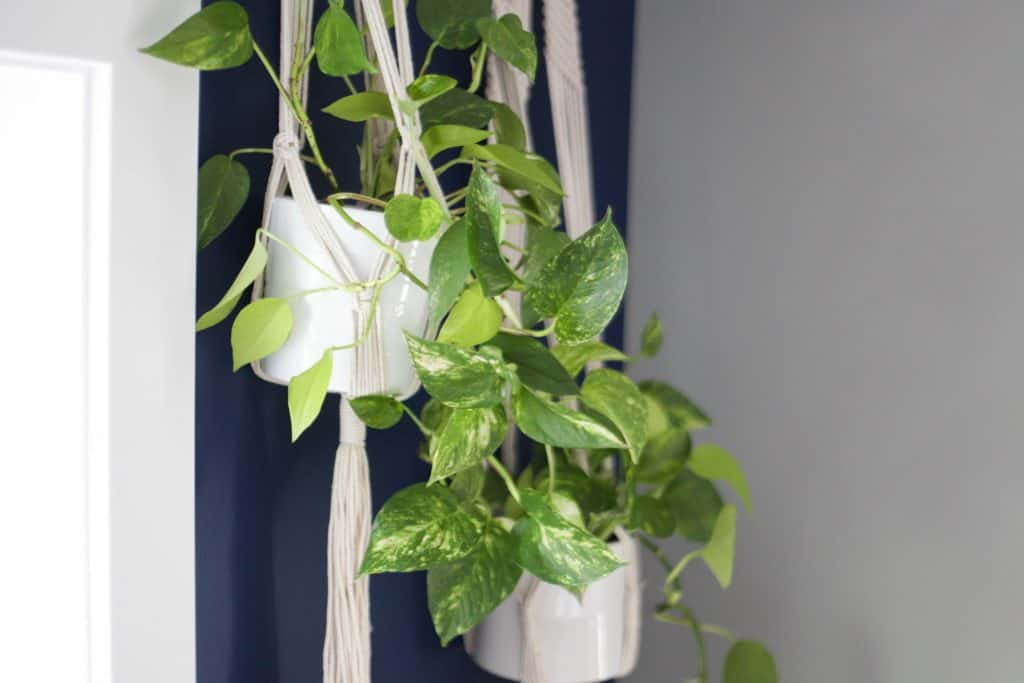
Be sure to check on your plant as sometimes the roots can consume the pot. What you’d have to do in this situation is repot the plant into another pot as soon as possible, checking that the size is bigger than your previous pot.
You might want to check on your plant in other ways too. If you find pests on your plant, take an alcohol-soaked cotton ball, and use it to kill the pests, ensuring that your plant can be free of all pest issues.
When it comes to PH levels, pothos generally isn’t too particular with soil acidity, although it does well in a range of 6.1 to 6.5. Fertilizers can also help your plant thrive if they include nutrients that the soil does not have.
Philodendron plant care
Light Requirements
Make sure your Philodendrons get enough light but not direct bright light! Most Philodendrons need indirect, bright sunlight. Find a place where there is natural light, but your plant won’t touch the sunshine.
This could be through a sheer curtain or just out of reach of the direct sun. If your plant’s leaves are constantly turning yellow, or losing its lovely green color, it may be getting too much light.
Water
Similar to the pothos, you’ll want to water your philodendron about every week or when it dries out. If the plant is dropping, it may not be getting enough water, or you may be overdoing it. Fixing the amount of water will help your plant bounce back to life.
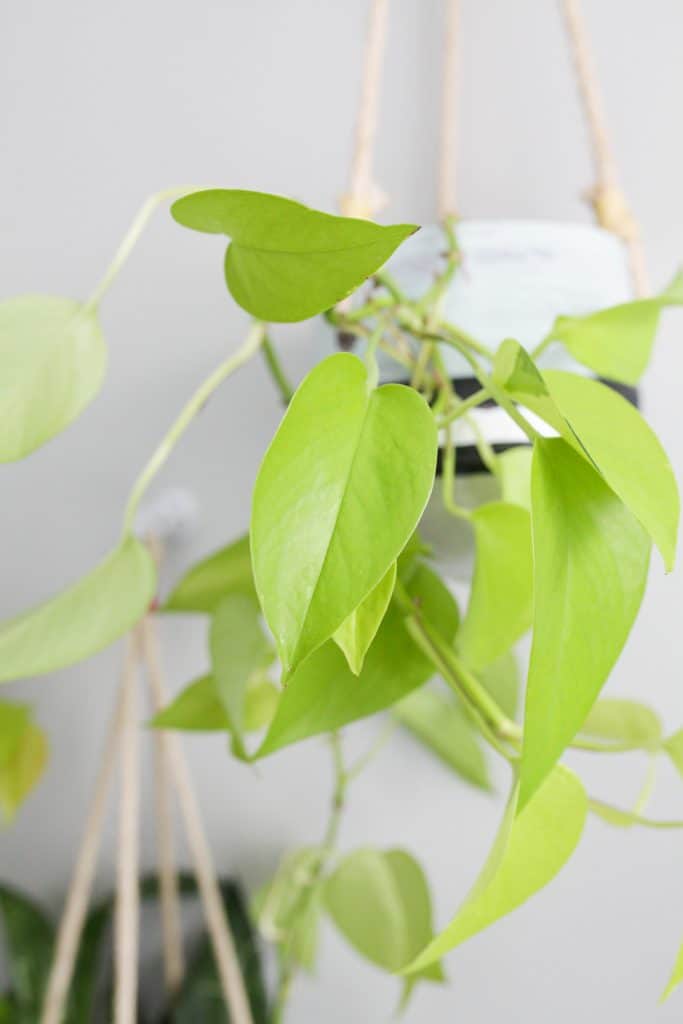
When it comes to humidity, you could always use a pebble tray of water to tackle any humidity issue with the philodendron plant. During the plant’s growing season, you might want to mist the plants every two days for added care.
You want to do everything you can to take care of your plants to the best of your ability, especially as they add such a decorative contribution to your home.
Furthermore, you’ll know if you’re overwatering your philodendron because the leaves will start turning yellow, while if you’ve been underwatering it, they will turn brown. Be mindful to water this houseplant in moderation to cause the least damage possible.
Other Philodendron Tips
Due to the plant’s fast rate of growth, you need to make sure you keep it in the correct sized pot – repot the plant once every year since they
tend to outgrow their pots. You can also keep the plant manageable by pinching off the new growth.
Fertilizer not only helps pothos plants but can aid philodendron plants too, especially if the fertilizers contain macronutrients.
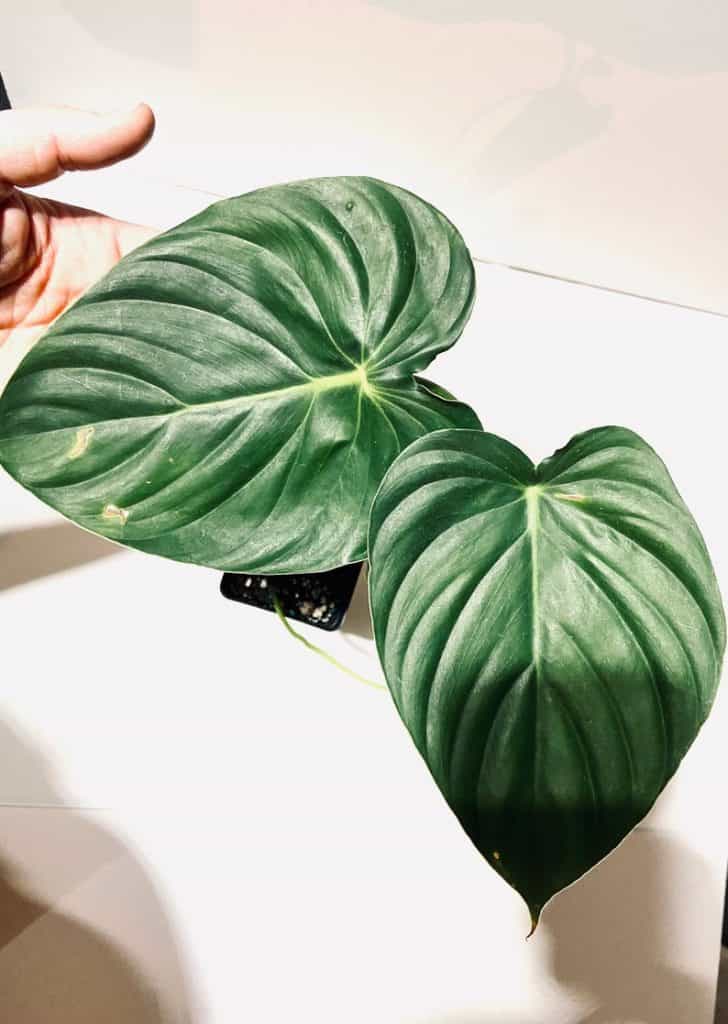
Image via Etsy – Aroid Life Co (where you can purchase)
Macronutrients are essential for the growth of this houseplant. In addition to this, make sure the pH levels are between 5.0 and 6.0 for philodendron plants for the best possible results of growth.
You can also apply insecticidal soap to this plant to keep those unwanted pests and insects away. Just like with pothos, you can use a cotton ball dipped in alcohol to get rid of them, maximizing your plant’s life span. You can commonly find aphids and mealybugs on philodendrons, so it’s important to look out for your plant in this way and make sure that they’re always in a good condition.
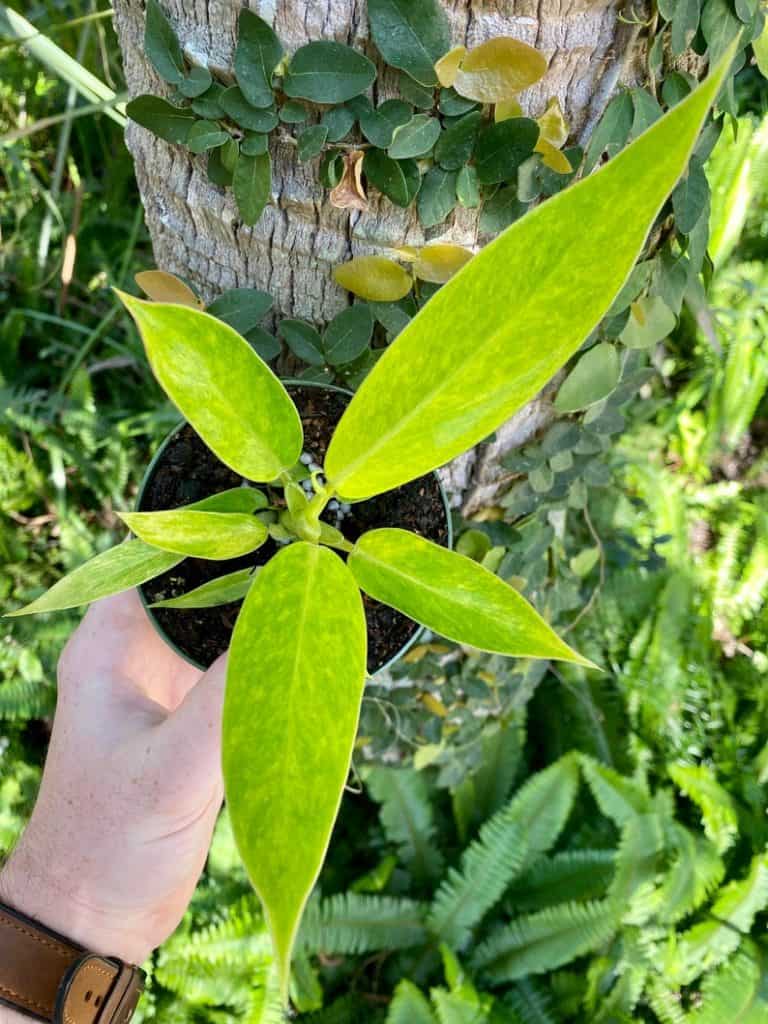
Image via Etsy – Cute Plant Club (also where you can buy it)
Conclusion
So, hopefully, this tells you everything you need to know about golden pothos and philodendrons from this article. These popular houseplants certainly have a lot of similarities and you can take care of them in similar ways.
Because they are so alike, it is possible to plant these two species together! You’ll need to give them both adequate space because of their large sizes, and tend to their individual needs, however, it is certainly doable if this is something you’re interested in to liven up your home.
Both golden pothos and philodendrons can do so much to add and complement your house’s interior design, meaning you’ll most likely enjoy having these plants present if you are up to the job of taking care of them.
You’ll definitely want to make sure that you keep them both in moderate lighting to minimize damage caused by direct sunlight, and you should always be mindful of repotting these plants since the roots can grow widely, however, the process of care is quite simple in the grand scheme of things.
Besides, even with their differences, each houseplant, whether this is pothos or philodendrons, would be a great addition to your home!
Now that you know the differences between pothos vs philodendron, check out these 18 different types of philodendron and these 9 types of pothos plants!

